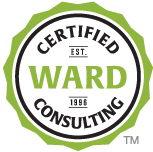15 years ago I wrote my first E-Couragement as a way to help an elite customer service team at Goldman Sachs retain the skills they learned in a half-day workshop. Since then, we’ve sent out over 700 emails (Whew!) with tips and techniques to help you and your customers have a better day. You stayed with me, looking past my 85+ typos, 4 business addresses, and 8 rebrands.
Thank you for reading, sharing, and for the responses you’ve sent along the way. Our goal has always been to help, and your comments proved that to be true!
Time to pivot.
I’m now focusing solely on helping people present their ideas online and on stage.
If you’re working on your presentation skills or an upcoming presentation, sign up to learn about coaching options.
If your team is preparing for an event, conference, or even QBR’s, ask me about group coaching or a webinar.
If you need a little help and have a specific concern, go to the Crowd Pleasers tab and search for the thing you’d like help with.
Thank you for reading and to those of you who sent reactions over the years, thanks for replying.
Now more than ever it’s important to Smile. Breathe. Rock On!
Ann








